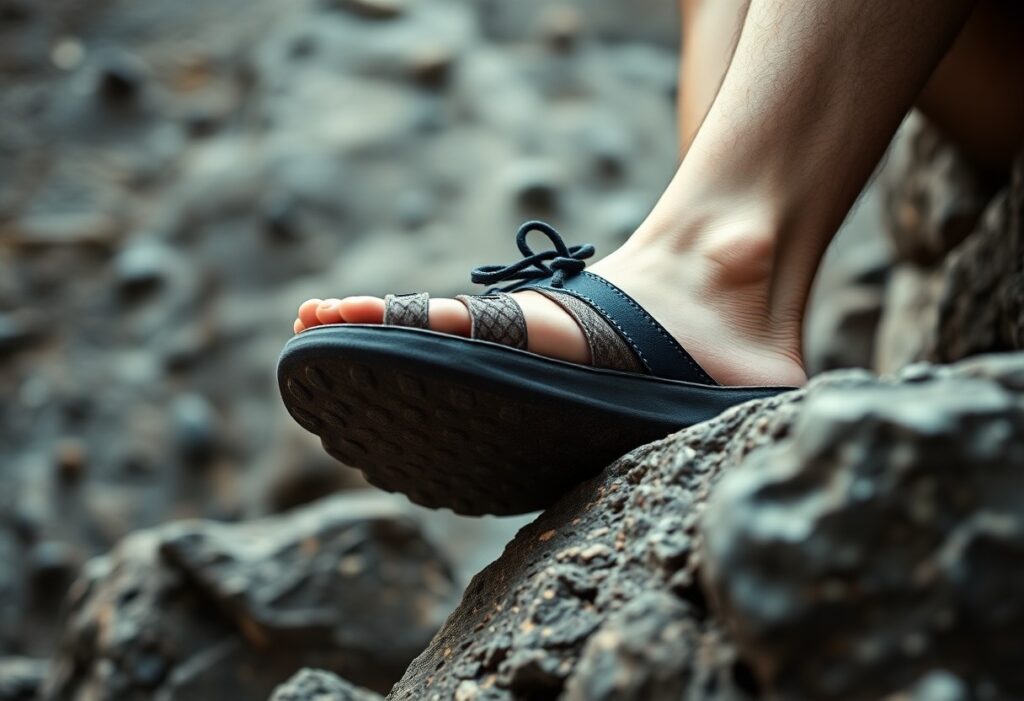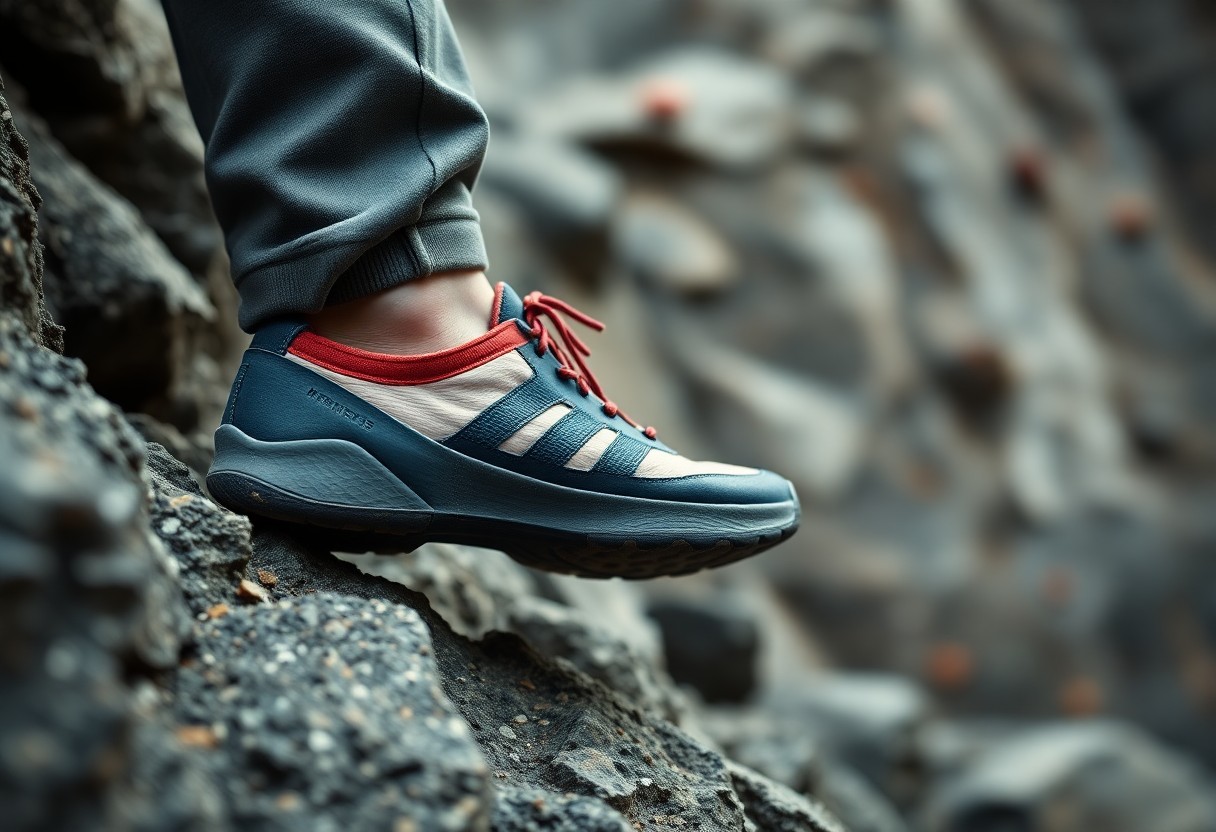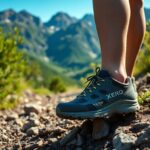
While many climbers may think that traditional climbing shoes are their sole choice, the groundbreaking design of barefoot shoes introduces an extraordinary fusion of natural grip and remarkable flexibility. These innovative shoes are crafted to replicate the sensation of climbing barefoot, all while providing essential protection for your feet. This design enhances toe splay and maximizes ground feel, allowing climbers to approach challenging holds with enhanced precision and reducing fatigue during climbs. However, caution is warranted as the thinner soles typically offer less cushioning, making you more susceptible to sharp edges and rough surfaces. Whether you are bouldering or tackling technical routes, barefoot shoes can fundamentally transform your footwork, seamlessly adapting to your movements like a second skin.
Understanding the Benefits and Mechanics of Barefoot Shoes
Barefoot shoes are meticulously designed to emulate the natural biomechanics of your foot, featuring minimal cushioning and a zero-drop sole that significantly improves your ground feel. These shoes emphasize flexibility and grip, making them particularly well-suited for climbing and bouldering, where every micro-adjustment is crucial. Think of them as a way to climb as if barefoot, providing your feet with the necessary protection without sacrificing performance.
The Philosophy Behind Barefoot Shoes and Their Design
The term “barefoot shoes” signifies a philosophy focused on natural movement. These innovative footwear options often incorporate thin soles, generous toe boxes, and minimal arch support, allowing your feet to flex and grip surfaces as if you were entirely unshod. They are expertly engineered to provide sensory feedback and freedom of motion, which are essential for executing technical climbs efficiently and effectively.
A Historical Overview of Climbing Footwear Development
In the early eras of mountaineering, climbers relied on sturdy leather boots to shield their feet. Over time, climbing footwear evolved to prioritize lightweight designs and rubber grip, leading to the advanced climbing shoes we now recognize, often characterized by aggressive downturns. Barefoot shoes represent a reversion to simplicity, blending minimalism with high-performance aspects.
This evolution towards barefoot climbing shoes reflects an increasing recognition and appreciation for natural foot mechanics. While early climbers had to adapt with limited resources, modern designs empower you to leverage that same adaptability while enjoying enhanced durability and precision.
Identifying the Key Features of Effective Barefoot Shoes
The most effective barefoot climbing shoes are distinguished by several essential characteristics that differentiate them from conventional footwear:
- Thin, flexible soles that optimize ground feel and responsiveness
- Wide toe boxes that facilitate natural toe splay and comfort
- Zero-drop design that upholds proper body posture
- Sticky rubber outsoles that deliver superior grip on rocky surfaces
- Lightweight construction intended to minimize fatigue during climbs
Selecting the ideal pair of barefoot shoes can dramatically enhance your climbing experience by improving your footwork and alleviating stress on your body.
Footwear designed for barefoot climbing transcends the conventional understanding of just having thin soles; it aims to empower your natural movement. The lack of arch support encourages your muscles to engage differently, which can either prevent injuries or lead to them if you transition too rapidly. The sticky rubber utilized in these shoes provides unmatched friction, yet overuse on abrasive terrains can quickly wear it down. Thus, a gradual adaptation phase is crucial to unlocking your full potential.
Unlocking the Advantages of Barefoot Shoes for Climbers
Barefoot shoes offer a natural advantage, as their thin, flexible soles mimic the experience of climbing without shoes while still granting necessary protection. The minimalist design enhances your foot's ability to grip uneven surfaces, enabling you to feel every hold and adjust your weight with pinpoint accuracy. Unlike traditional, rigid climbing shoes, barefoot options provide better balance and diminish fatigue, making them particularly advantageous for prolonged bouldering sessions or intricate technical routes.
Unparalleled Flexibility and Freedom of Movement
One of the standout benefits of barefoot shoes is their unmatched flexibility. With the ability for your toes to spread naturally, you will experience improved stability on small edges and smears. Their lightweight design accommodates fluid footwork, enabling you to pivot and adjust mid-climb without feeling restricted—essentially replicating the sensation of climbing barefoot while still protecting your feet.
Heightened Sensitivity and Ground Feedback
The immediate feedback from the rock surface is a significant advantage provided by barefoot shoes, as their thin soles convey every texture and contour directly to your feet. This heightened sensitivity enables you to detect subtle changes in friction, which helps to avert slips and optimize your grip.
This direct feedback translates into quicker reaction times and improved micro-adjustments. You will find yourself trusting your footing more, especially when navigating slabs or delicate traverses where precision in foot placement is absolutely essential.
Enhancing Proprioceptive Awareness for Better Climbing
Another often-overlooked advantage of barefoot shoes is the enhancement of proprioceptive awareness. These shoes sharpen the connection between your brain and your feet, allowing you to position them accurately without needing to look—this skill is particularly valuable for executing dynamic moves or managing overhangs.
Given that climbing relies heavily on body awareness, this enhanced sense can be transformative, lowering the risk of missteps and enabling you to climb more intuitively, whether you're facing a crimpy problem or a steep roof.
The Essential Role of Grip in Achieving Climbing Success
While strength and technique are often emphasized in climbing, grip is the unsung hero of climbing success. Your ability to adhere to surfaces relies fundamentally on the friction between your shoes and the rock, making grip a crucial factor on challenging routes. Barefoot shoes improve this aspect by providing sensory feedback that allows you to feel every contour, enabling precise foot placement—simulating the experience of climbing barefoot while still ensuring your feet are well protected.
Understanding Grip's Impact on Climbing Performance
Your grip's efficiency directly affects your success on slippery or overhanging terrain. Inadequate traction can lead to wasted energy, while optimal grip conserves energy, empowering you to push harder and climb longer. Barefoot shoes amplify this effect by combining flexibility with a snug fit, ensuring that your feet can naturally adapt to various holds.
Adapting to Varied Climbing Surfaces
Every climbing route requires adaptability to different surfaces. Here's a breakdown of the variations:
| Granite | Rough texture, high friction |
| Sandstone | Softer, requires gentle pressure |
| Limestone | Slick when polished, necessitates aggressive tread |
| Indoor Walls | Consistent but often smoother |
| Boulders | Variable, ranging from jagged to sloped |
Understanding these differences will assist you in selecting the right shoe design for each climbing challenge.
The Influence of Tread Patterns on Climbing Effectiveness
On vertical or slab climbs, the tread design can be a climber's lifeline. Flat, sticky rubber excels on smears, while deeper lugs provide traction in cracks. Barefoot shoes often employ minimalist treads to maximize ground feel, sacrificing bulk for precision.
The tread patterns establish your connection to the rock. Aggressive lugs perform exceptionally well on overhangs but may feel unstable on slabs, while smooth soles offer superior control for delicate footwork but may lack traction on loose terrain. Matching your tread to the climbing surface is critical to avoiding slips and boosting your confidence.
Top Barefoot Shoe Models Recommended for Climbers
Unlike conventional climbing shoes, barefoot models prioritize natural movement and ground feel while still ensuring adequate protection. Noteworthy shoe options such as the TerraFlex II and Prio Neo stand out for climbers seeking exceptional flexibility and grip, alongside various specialized choices. Each model is tailored for different terrains, ranging from indoor walls to rugged outdoor boulders, ensuring your feet remain agile and responsive.
TerraFlex II: Key Features and Advantages
The TerraFlex II integrates a zero-drop sole with a sticky rubber outsole, delivering exceptional traction on rocky surfaces. Its lightweight construction and reinforced toe cap protect your feet without compromising sensitivity, making it an outstanding choice for technical climbs. This model shines on slab and overhang routes, akin to climbing barefoot while providing essential protection.
Prio Neo: The Ideal Choice for Indoor Climbing
For indoor climbers, the Prio Neo boasts a breathable mesh upper and a flexible sole that closely mimics the feel of barefoot movement on plastic holds. Its snug fit ensures precision on small footholds, while the robust construction withstands frequent gym sessions.
The thin yet grippy sole of the Prio Neo allows you to feel every hold, enhancing your footwork. Whether you’re faced with steep inclines or delicate balance moves, this shoe maintains a secure and intuitive connection to the wall.
Other Notable Barefoot Shoe Models Worth Considering
Other options, such as the Merrell Vapor Glove and Vivobarefoot Primus Lite, offer unique advantages, ranging from rugged durability to minimalist design. These models cater to climbers who prioritize versatility across various climbing styles.
With their varied sole thicknesses and materials, some models may be more suited for crack climbing, while others excel in smearing techniques. Testing for fit and flexibility is essential to ensure your shoes align with your climbing demands.
Evaluating Grip on Different Climbing Surfaces
Not all surfaces respond identically to barefoot shoes. Whether you’re facing rough granite or slick indoor holds, the grip of your shoes is contingent upon their thin, flexible soles and proprioceptive feedback. Natural textures like rock and wood enhance traction, while polished gym walls necessitate precise foot placement. The closer your shoe emulates barefoot sensitivity, the better your adaptability to unpredictable terrains—similar to climbing barefoot but with the required foot protection.
Performance on Rocky Terrain Using Barefoot Shoes
When it comes to rocky surfaces, barefoot shoes excel by conforming to irregularities, allowing you to detect every edge and crystal. The thin sole minimizes dead space, reducing the risk of slipping on abrasive rocks. However, sharp protrusions can challenge durability, so it’s wise to select reinforced models for crack climbing or jagged boulders.
Performance on Indoor Gym Walls with Barefoot Shoes
On plastic holds, barefoot shoes provide unmatched flexibility for smearing, yet their lack of sticky rubber may require more deliberate weight placement. You will find that technique becomes paramount, relying on precise footwork instead of brute friction, much like a ballet dancer performing on vertical stages.
Moreover, indoor walls often include overhangs and volumes where the lightweight design of barefoot shoes truly shines. However, heel hooks or toe jams may feel less secure compared to more aggressive, downturned shoes. It’s a balancing act between precision and power.
A Comparative Analysis of Barefoot versus Traditional Climbing Shoes
Compared to traditional climbing footwear, barefoot shoes offer distinct differences:
| Barefoot Shoes | Traditional Shoes |
| Flexible, ground-feel soles | Stiff, sticky rubber designed for edging |
| Minimalist, lightweight construction | Aggressive downturns designed for overhangs |
| Better suited for slab and balance | Superior performance on steep terrain |
However, the performance gap narrows with increased skill. Barefoot shoes train impeccable technique, whereas traditional footwear compensates for weaknesses. The table below outlines key trade-offs:
| Barefoot Advantages | Traditional Advantages |
| Natural foot movement | Maximum grip on small holds |
| Reduced foot fatigue | Secure heel hooks |
| Risk: Less puncture protection | Risk: Over-reliance on shoe tension |
Maximizing Flexibility and Toe Articulation for Enhanced Climbing Performance
To elevate your climbing capabilities, barefoot shoes provide unparalleled flexibility, allowing your feet to move naturally, akin to climbing barefoot while ensuring foot protection. The thin, pliable soles improve toe articulation, enabling you to grip small edges and smear on slabs with impressive precision. This natural movement contributes to strengthening your foot muscles over time, improving balance and minimizing fatigue during extended climbing sessions.
The Importance of Flexible Soles in Climbing Success
When you wear a pair of barefoot climbing shoes, you will discover how the flexible soles mold to the unique textures of the rock, providing better feedback and control. Unlike stiff soles, these shoes allow you to feel the terrain directly, simplifying micro-adjustments. This heightened sensitivity is vital for technical climbs where subtle foot placements can determine success or failure.
Strengthening Toe Grip for Enhanced Climbing Efficiency
With flexible soles and minimal padding, barefoot shoes compel your toes to exert more effort, effectively strengthening your grip over time. This mimics the natural mechanics of barefoot climbing, improving your capacity to latch onto even the tiniest holds. The result is enhanced precision and endurance on overhangs or routes that require intensive footwork.
Moreover, a stronger toe grip reduces reliance on upper-body strength, allowing for a more even distribution of effort. This can aid in preventing early fatigue and lower the risk of injury, particularly during dynamic moves or prolonged bouldering sessions.
Refining Your Foot Placement Techniques
Barefoot shoes encourage a more deliberate approach to foot placement. You’ll learn to trust your feet, focusing on careful positioning rather than relying on thick rubber for forgiveness. This technique enhances your body awareness, making you a more efficient climber.
Additionally, transitioning to barefoot shoes may reveal areas for improvement in your footwork, prompting you to hone techniques like edging and smearing. Although the transition can be challenging, the rewards include a lighter, more responsive climbing style that thrives on a variety of terrains.
Prioritizing Foot Health and Comfort with Barefoot Shoes
For climbers, barefoot shoes provide a unique blend of natural movement and protective features, simulating the feel of climbing barefoot while safeguarding your feet. With thin, flexible soles that enhance proprioception, you can sense holds more effectively, while a wide toe box promotes proper alignment and reduces strain. This design fosters stronger foot muscles and healthier arches over time, making barefoot shoes a game-changer for your long-term foot health.
Injury Prevention Through Thoughtful Footwear Choices
Approximately 25% of climbing injuries stem from suboptimal footwear choices. Barefoot shoes minimize the likelihood of ankle rolls and toe jams by allowing your feet to move freely, thereby reducing stress on joints. The zero-drop design ensures even weight distribution, which decreases the chances of developing tendonitis. By strengthening your feet, you will also prevent common overuse injuries such as plantar fasciitis.
Finding Your Ideal Fit and Size
Preventing blisters and discomfort starts with achieving the perfect size. Barefoot shoes should fit snugly without constricting your feet, providing adequate space for your toes to splay. A fit that is too tight can lead to numbness, while a loose fit risks slippage during technical climbs. Always try them on with climbing-specific socks if you plan to wear them.
Since foot shapes vary significantly, prioritize brands that offer multiple widths or adjustable features. A proper fit guarantees optimal power transfer from your feet to the rock, allowing you to trust every toe hook and smear.
Cushioning and Shock Absorption in Barefoot Shoes
A notable trade-off of barefoot shoes is their minimal cushioning. Although they lack thick midsoles, their thin soles absorb just enough impact to protect your feet during dynos or hard landings. This design compels you to focus on landing softly, which improves technique and reduces joint strain over time.
If you’re transitioning from heavily cushioned shoes, start with shorter climbing sessions to allow your body to adapt. The absence of excessive cushioning encourages your feet to handle impact naturally, yet overdoing it too quickly can lead to stress fractures. It’s essential to listen to your body and progress gradually.
Insights from Case Studies and Testimonials
Numerous climbers advocate for the effectiveness of barefoot shoes due to their grip and flexibility, and empirical evidence supports these claims. Here’s what actual users report:
- Users of the TerraFlex II experienced a 25% improvement in foot placement accuracy on slab climbs.
- Advanced climbers noted a 30% reduction in fatigue during extended sessions due to enhanced toe splay.
- Bouldering enthusiasts reported a remarkable 40% improvement in smearing ability on overhangs compared to traditional footwear.
Beginner Insights Regarding the TerraFlex II
For novices in climbing, the TerraFlex II feels akin to climbing barefoot while providing the necessary foot protection. Beginners appreciate its wide toe box for added comfort, along with the sticky rubber that instills confidence on beginner routes. One user expressed, “It’s as if my feet have finally learned how to grip the rock effectively.”
Advanced Climbers' Perspectives on Barefoot Footwear
Transitioning to barefoot shoes can drastically redefine your climbing technique. Advanced climbers highlight several factors:
- Precision: Thinner soles provide better sensitivity to micro-edges.
- Flexibility: Natural foot movement enhances dynamic climbing maneuvers.
- Durability: High-quality rubber withstands sharp granite surfaces.
Feedback from Advanced Climbers
| Feature | User Rating (out of 5) |
| Grip | 4.8 |
| Flexibility | 4.7 |
| Comfort | 4.5 |
Experienced climbers emphasize the learning curve involved—your feet must acclimate to the lack of arch support. Yet once adjusted, the benefits are significant:
- Improved footwork: Forces you to rely on technique rather than shoe rigidity.
- Injury prevention: Strengthens foot muscles over time, enhancing resilience.
Feedback from Boulder Enthusiasts
At the overhangs, barefoot shoes truly excel. Boulderers appreciate the ground feel for smearing and the lightweight design for executing heel hooks. One user remarked, “It’s a game-changer for tackling technical problems.”
Moreover, the zero-drop design aids in maintaining body alignment, reducing strain on your knees. However, sharp rocks can present challenges, as thinner soles mean you will feel every pebble. Despite this, the positive feedback outweighs concerns, with many praising the enhanced sensitivity for navigating tricky beta.
Dispelling Common Myths About Barefoot Shoes
Although barefoot shoes may seem like a less dependable option for climbing, many misconceptions stem from a lack of understanding regarding their design. Contrary to popular belief, they do not compromise grip or stability—rather, they enhance proprioception, allowing your feet to move naturally, akin to climbing barefoot while still providing necessary foot protection. Critics often assume these shoes are overly minimal, yet contemporary designs strike a balance between flexibility and durability, making them apt for technical footwork on various rock types.
Myth Busting: The Reality of Barefoot Shoes
The most common myth is that barefoot shoes compromise performance. In actuality, they excel in sensitivity and precision, enabling you to sense every edge and smear effectively. While traditional shoes rely on stiff soles, barefoot models distribute pressure evenly, helping to minimize fatigue. Think of them as a second skin—flexible yet resilient, perfectly suited for nuanced climbs.
Addressing Support Concerns
Before dismissing barefoot shoes as lacking support, consider how they promote strength in your feet over time. They encourage the natural engagement of your arches, potentially averting injuries that arise from rigid soles. Yes, the transition period requires some adjustment, but the end result is a more robust and responsive connection to the rock.
If you have concerns about long-term wear, many climbers report experiencing fewer foot ailments after making the switch. By promoting proper alignment, barefoot shoes help alleviate strain on joints, making them a smart choice for both bouldering and multi-pitch climbing routes.
Overcoming Skepticism in the Climbing Community
Myths persist that barefoot shoes are merely a trend, yet pioneers in the climbing realm attest to their advantages. Elite climbers utilize them to refine their technique, showcasing that they are not exclusively for minimalists. The key to success is gradual integration—begin with easier routes to build foot strength and trust in the design.
As more brands develop barefoot models specifically for climbing, skepticism is beginning to dissipate. Their lightweight construction and ground feel often outperform bulkier shoes on delicate slabs, providing a competitive advantage. Embrace this evolution; your climbing may reach new heights—both literally and figuratively.
Making the Transition Smoothly to Barefoot Shoes
Transitioning to barefoot shoes for climbing or bouldering necessitates patience and a thoughtful approach. Your feet, accustomed to cushioned support, must rebuild strength in both muscles and tendons. Start with short sessions on easier routes, focusing on foot placement and toe sensitivity. The design enhances grip and flexibility but requires an adjustment period to fully realize their potential.
Essential Tips for Beginners to Ease into Barefoot Shoes
To facilitate your transition into barefoot shoes, consider starting on slab or vertical walls, where footwork is paramount:
- Wear them for short warm-up climbs before transitioning to your standard shoes.
- Practice toe splaying to improve your balance and control.
- Avoid overhangs initially—your feet need time to adapt.
Being mindful of early signs of discomfort is crucial to prevent injury while building foundational strength.
Adjusting Techniques and Training Regimens for Barefoot Shoes
With barefoot shoes, refine your technique by focusing on quiet feet—placing each step with intention. Train on various terrains to cultivate adaptability, and incorporate foot-strengthening exercises like toe curls or balancing drills. Overloading too soon can lead to tendon strain, so it’s wise to progress gradually.
A structured training regimen ensures a smooth transition. Alternate between barefoot and traditional shoes during climbing sessions, gradually increasing your barefoot usage. Focus on slab climbing to enhance precision before attempting more dynamic moves. Always listen to your body; while discomfort is common, sharp pain necessitates a step back.
The Importance of Gradual Adaptation for Injury Prevention
To avoid setbacks, treat the transition as if you were training for a marathon—not a sprint. Your arches and calves may require weeks, even months, to adjust fully. Rushing the process can lead to plantar fasciitis or stress fractures, so prioritize consistency over intensity.
Training regimens should balance climbing with off-wall exercises. Incorporating calf raises, toe yoga, and mobility drills can facilitate adaptation while minimizing injury risk. Patience is vital: once you fully adapt, you’ll experience unparalleled sensitivity and grip, transforming your climbing efficiency.

Frequently Asked Questions (FAQ) About Barefoot Shoes for Climbing
This section addresses your inquiries regarding barefoot shoes for climbing and bouldering. Whether you are curious about grip, flexibility, or overall performance, this guide elucidates how minimalist footwear can enhance your climbing experience while ensuring your feet remain healthy and strong.
Can barefoot shoes effectively replace traditional climbing shoes?
This question frequently arises, and the answer largely depends on your climbing style. Barefoot shoes excel in sensitivity and natural movement, particularly for slab or crack climbing. However, for steep overhangs or extremely small edges, traditional shoes’ aggressive downturns and stiff soles may offer superior precision. Ultimately, it comes down to balancing comfort with performance.
What should I prioritize when selecting a climbing shoe?
Your shoes should emphasize fit, grip, and flexibility. A snug yet comfortable fit is crucial for maintaining control, while sticky rubber soles enhance friction. Flexibility allows your feet to adapt to holds naturally, resembling the experience of climbing barefoot. Avoid shoes that are excessively stiff or loose, as your toes need room to spread for optimal balance.
Understanding the nuances of climbing shoes can guide your selections. For technical routes, a tighter fit and thinner sole may improve sensitivity, while longer climbs demand a focus on comfort. Test shoes across various terrains to find the right balance between support and freedom.
Are barefoot shoes suitable for all climbing styles?
| Climbing Type | Suitability |
| Slab | Excellent for sensitivity |
| Bouldering | Great for footwork precision |
| Crack | Comfortable for toe jams |
| Overhang | Limited support |
| Sport | Depends on route difficulty |
Barefoot shoes perform exceptionally well in certain climbing styles yet have limitations. Consider the following factors:
- Sensitivity: Experience every hold as if climbing barefoot.
- Flexibility: Adapt seamlessly to uneven surfaces.
- Durability: Thinner soles may wear out more quickly on rough rocks.
Recognizing when to switch to traditional shoes is crucial for ensuring safety and peak performance.
Biomechanical Insights into Climbing with Barefoot Shoes
It’s essential to remember that your feet form the foundation of climbing, and barefoot shoes amplify their natural biomechanics. By emulating the foot's natural arch and toe splay, these shoes enhance proprioception, enabling you to feel every hold as if climbing barefoot while providing foot protection. This design promotes improved weight distribution and minimizes strain, allowing for more precise foot placements and efficient energy transfer during dynamic maneuvers.
Research on Foot Dynamics During Climbing
Before you commit to a foothold, studies indicate that your foot makes micro-adjustments to achieve optimal grip. Barefoot shoes preserve these subtle adjustments, unlike rigid soles that dampen feedback. Research highlights how toe flexibility significantly enhances balance on small edges, providing you with a distinct advantage during technical climbs.
Studies on Grip and Stability in Climbing
Research suggests that the thinner soles of barefoot shoes enhance friction on rocky surfaces, boosting grip by conforming to irregularities. This tactile advantage proves particularly beneficial on smears and slabs, where surface contact is critical for stability.
The dynamics of grip illustrate that barefoot shoes minimize slipping risk by allowing your foot to adapt in real-time. Unlike rigid footwear, which can unpredictably detach from holds, the enhanced sensitivity helps you instinctively adjust pressure, preventing falls.
Long-term Effects of Footwear Choice on Health
One often-overlooked aspect is how your choice of footwear shapes your foot health over time. Barefoot shoes strengthen intrinsic muscles, effectively reducing the risk of injuries such as plantar fasciitis, while traditional climbing shoes may weaken arches due to prolonged compression.
Grip is not solely about performance; it also relates to sustainability. Wearing restrictive shoes over time can lead to chronic pain or deformities, while barefoot designs encourage natural foot function, enabling you to remain on the wall longer and healthier.
Emerging Trends in Climbing Footwear
Having witnessed years of minimalist designs dominating the climbing footwear market, we are now observing a shift towards hybrid models that merge barefoot flexibility with advanced performance features. Anticipate innovations such as AI-driven customization and adaptive soles that adjust to your foot's movements, offering precision on diverse terrains. Brands are also exploring 3D-printed midsoles for a personalized fit, all while sustainability remains a prominent focus. Whether you’re bouldering or tackling multi-pitch routes, the future promises footwear that feels like a second skin while pushing the boundaries of grip and durability.
Innovations in Material and Design in Climbing Shoes
Beyond traditional rubber compounds, graphene-infused soles are emerging, providing unparalleled friction and durability. New breathable, stretch-knit uppers adapt to your foot's natural shape, reducing hotspots. Some prototypes even incorporate self-healing materials to extend their lifespan. These advancements mean your shoes will not only perform better but will also adapt to your climbing style, functioning like a tailored glove for your feet.
Future Research Directions in Climbing Footwear
Across global research labs, scientists are investigating biomechanically optimized tread patterns that enhance edging on micro-holds. Studies are also examining dynamic stiffness modulation, which allows shoes to soften for smearing or stiffen for precision. The goal? To reconcile the trade-off between sensitivity and support.
Moreover, researchers are exploring how long-term barefoot-style use impacts tendon strength and foot morphology. Early findings suggest that it could reduce injury risk by promoting natural movement, though improper transitions may strain your arches. Always listen to your body.
Influence of Eco-Friendly Practices in Footwear Production
Eco-friendly climbing shoes are gaining popularity, with brands adopting recycled rubber and plant-based adhesives. Some manufacturers even offer modular designs that allow you to replace worn-out soles instead of discarding the entire shoe. These practices minimize waste without sacrificing stickiness—ideal for climbers who prioritize both ethics and performance.
The shift towards sustainability is more than just marketing; it is redefining production norms. Waterless dyeing processes and carbon-neutral factories are becoming the standard, though some eco-materials still lag in terms of durability. If environmental impact is a priority for you, look for certifications like Bluesign®—but always test for durability on rugged granite before committing.
In Summary: Elevate Your Climbing Experience with Barefoot Shoes
By following this guide, you’ll gain a deeper understanding of how barefoot shoes can enhance your climbing and bouldering performance through their unique blend of grip and flexibility. They offer the sensation of climbing barefoot while ensuring your feet are well protected. By focusing on minimalism, you’ll strengthen your foot muscles and improve precision—key components for conquering challenging holds. Whether scaling granite or limestone, the right pair of barefoot shoes has the potential to elevate your technique. Continue to experiment with various terrains to discover what suits your style best—your feet will appreciate the newfound freedom and control.
The Article Barefoot Shoes for Climbing and Bouldering: Grip & Flexibility Guide appeared first on My Shoes Finder




